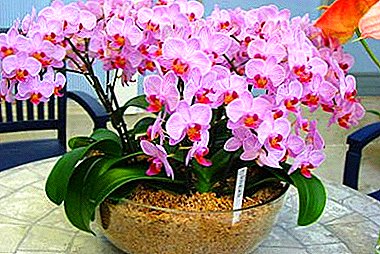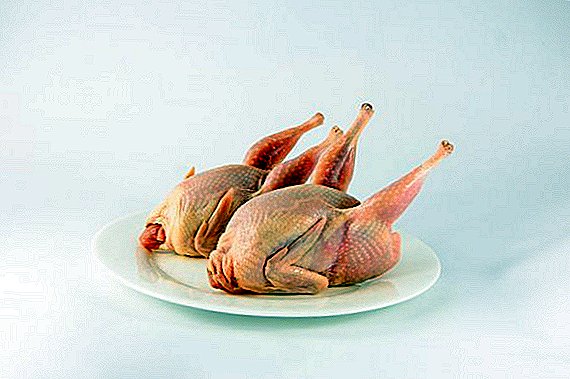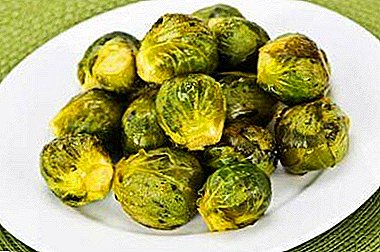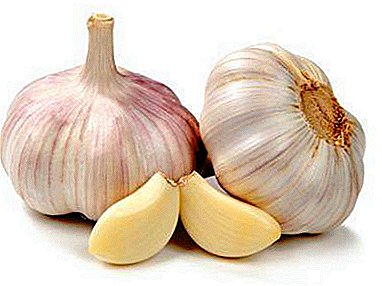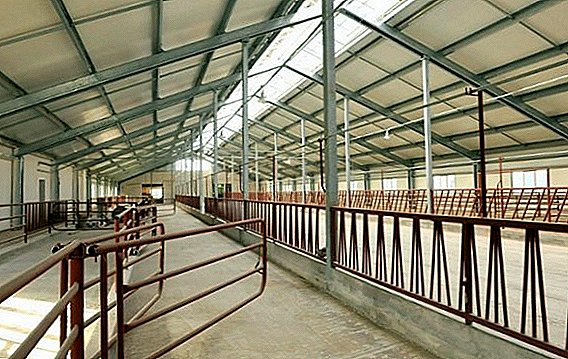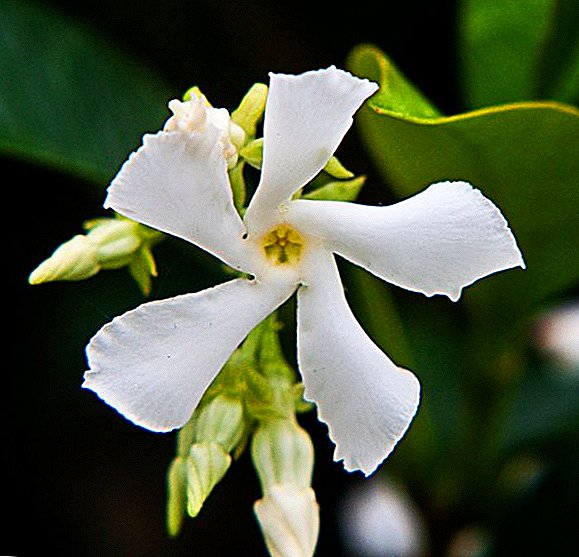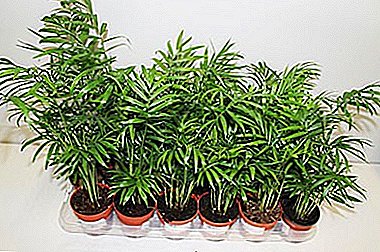
Hamedorea - a very attractive ornamental plant that will liven up any room and give it an exotic look.
Naturally, I want such beauty spread and enlarge. For this purpose, the palm tree is propagated using seed and vegetative methods.
Seed propagation
How does Hamedorea reproduce? Reproduction at home in two ways.
Pollination
 The most popular and quite an effective method, though time consuming and time consuming. Purchase planting material can be in the store or get it yourself.
The most popular and quite an effective method, though time consuming and time consuming. Purchase planting material can be in the store or get it yourself.
In the latter case will have to work hard. To Hamedorea gave quality seeds, you need to place next to the male and female plants and take care of pollination.
In nature, this is done by flying insects, the house will have use your own knack and brush. She carries ripe pollen from the stamen of the male palm to the female pistil.
If the procedure was performed correctly, seeds will soon appear. As they mature, they will fall lower and lower.
Ripe fruit located close to the ground. At this time, and they need to collect. It is undesirable to store them for a long time, the maximum period is 10-11 months.
Hamedorea seeds: photos of unripe and ripened fruits.


Step by Step Seed Instructions
- Soak seeds in cool water for 4-6 days. You can add growth stimulants to it - Zircon, Epin, Ribav-extra.
- Remove all residual juicy upper shell.
- Thin the hard layer with a needle file or abrasive stone and lightly saw.
- Fill disposable plastic cups or small pots with a suitable substrate, pre-cutting the drainage holes at the bottom of each.
- Thoroughly moisten the soil in the containers and place the seeds one by one to a depth of 2 cm. The cut part should look upwards.
- The cups can be put in a greenhouse or closed on top with a film, half a bottle or a glass jar. This creates the effect of a greenhouse, in which the moist heat of the substrate and air is constantly maintained.
- Put the seeds in a place where the seeds will be in the light at least 9-11 hours a day.
- To avoid mold, it is necessary to air the plantings by regularly opening them for 1-2 hours.
- Be patient - seeds can "sit" in the substrate for as long as 5-8 months, until they begin to germinate.
- Sprouted seeds are transplanted into a more spacious pot after the appearance of the first true pair of leaves and their increase to 3-5 cm in length.
Selection of soil for sowing
The substrate must be loose and breathableTherefore, such additives as vermiculite and perlite in the same proportions are introduced into the garden or leaf soil.
Creating suitable conditions
To plant material sprouted, he needs to provide:
- Constantly warm air at least 26 °.
- High humidity.
- Stable wetted soil without stagnant water.
- Regular air flow (airing).
- Lack of a mold and fungus.
- Good ambient lighting most of the day.
Reproduction shoots
 A faster and easier way than the previous one. Rooting occurs in 5-7 weeksand the formation of a new plant is possible already after 3.5-4.5 months.
A faster and easier way than the previous one. Rooting occurs in 5-7 weeksand the formation of a new plant is possible already after 3.5-4.5 months.
In order not to disturb the palm tree often, the separation of planting material is carried out during spring transplantation of Hamedorei. For breeding, very young bushes are usually separated, which have not yet reached a height of 20 cm.
Step-by-step instructions for the separation and planting process
- Carefully remove the adult palm from the pot and clean the root system of the soil. This is easy to do with a stream of water that will erode the earth com.
- Take a sharp-cut knife and cut a young sprout from the main plant. The connecting roots are cut as close as possible to the palm donor.
- All sections are decontaminated with charcoal powder.
- A small pot filled with a layer of drainage at the bottom and the right substrate.
- Plant a scion in it, straightening the roots and sprinkling them with soil.
- Top layer slightly compacted and pour clean water.
- A pot to close a film from polyethylene.
Soil selection
The substrate must be fertile, light and loosened. Optimal combination of 2 parts of humus with 1 part of perlite and 1 part of sod soil.
Creating suitable conditions
 To the process is well rooted and settled down in the new soilprovide him:
To the process is well rooted and settled down in the new soilprovide him:
- Steady hot climate with a temperature of at least 29 °.
- High air humidity by spraying.
- Being in a bright place with constant access to diffused sunlight.
- Moisturized substrate that does not have to dry completely.
Whatever breeding method you choose, the main thing is not to turn halfway. And then you get your own tropical corner.


